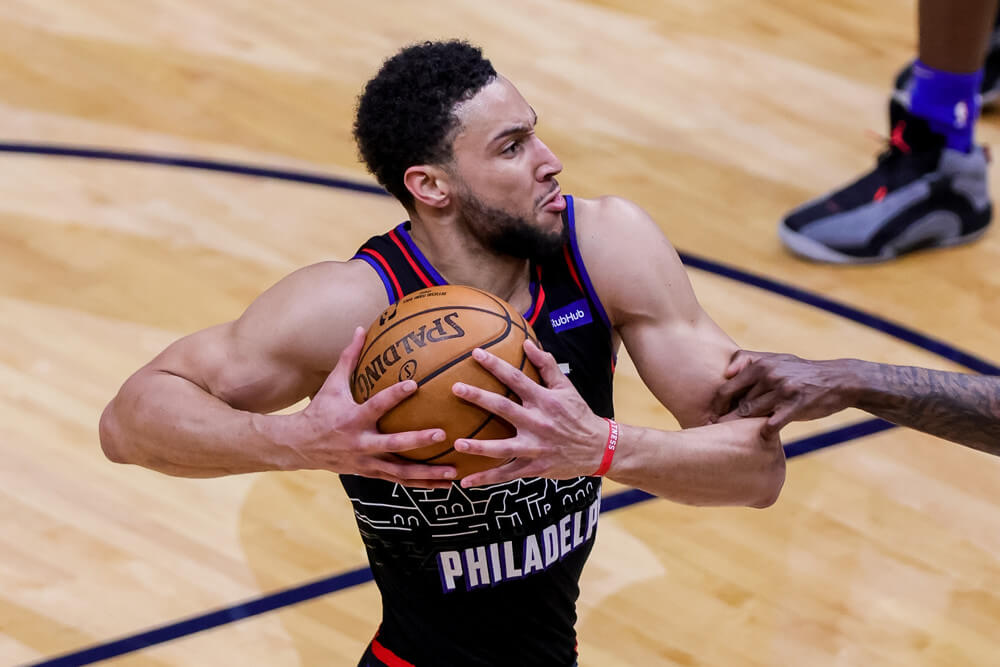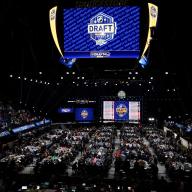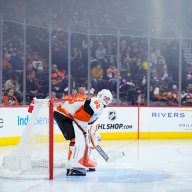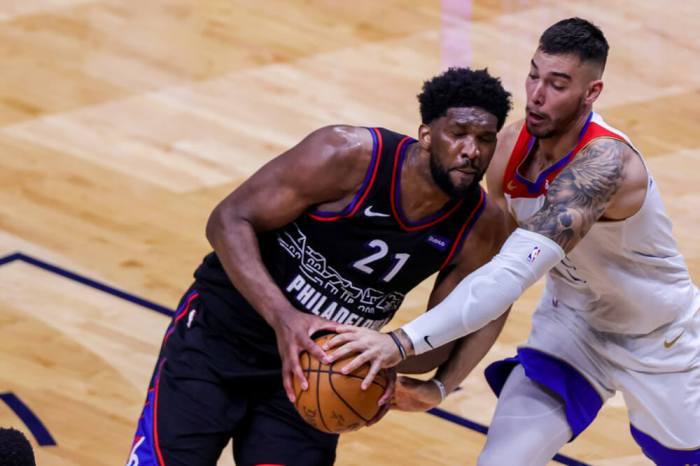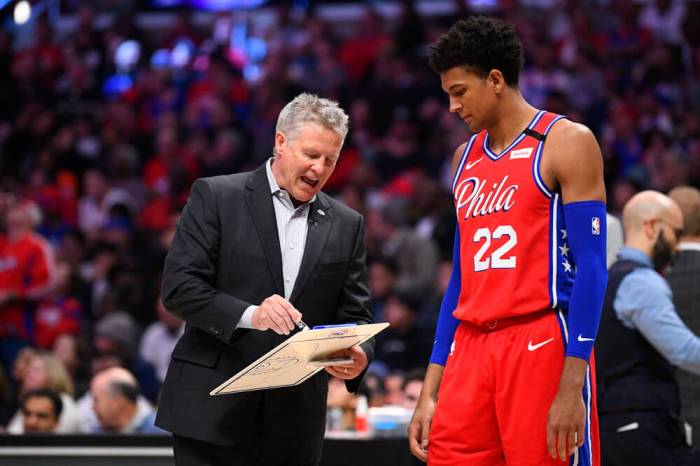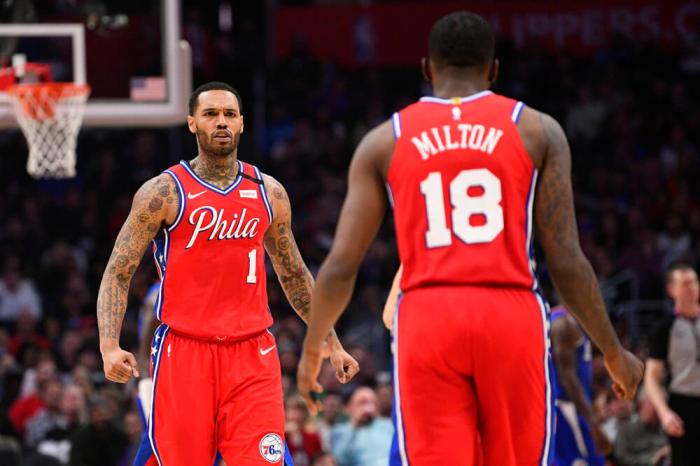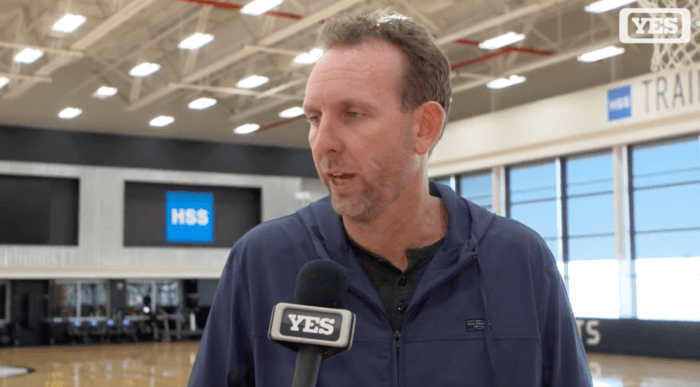Ben Simmons often struggles in a half-court offense; here are three ways for Doc Rivers to combat the issue heading into the playoffs.
Ben Simmons has become one of the most controversial athletes in all of Philly sports. After the Sixers selected him with the first overall pick in the 2016 draft, the expectation was for Ben Simmons to develop into an NBA superstar. With many Sixers fans distracted by Ben’s unwillingness to develop an outside shot and others overly obsessed with the little things that Simmons does beyond the stat sheet, it is tough to gauge how great Simmons truly is.
Regardless of your thoughts on him, the Fresh Prince has played a vital role in the Sixers’ ascension into true title contenders. He has found his identity on the defensive end and locked up opposing stars on a nightly basis. While the metrics for his DPOY caliber year are extremely impressive, there has still been a lack of growth on the offensive end.
Simmons excels in the fast-break and is one of the best transition players in the NBA but has continually struggled in the half-court set offense. Even with the Sixers recording their best offensive rating since 1989 and the team finding themselves in the top half of the league for points per game, Simmons recorded career lows in several offensive categories. On the season, Simmons averaged 14.3 points, 6.9 assists, 7.2 rebounds, and attempted 10.1 shots per game. While these are considered fine numbers for many players, these are all career lows for the three-time all-star.
As the playoff intensity begins to increase, the style of play turns into more of a half-court matchup. This limits Simmons’ potential to get out on the break and could be a disadvantage for the Sixers. With the fourth-year player providing so much on the defensive end, it is essential to find a way to work him into the offense in order to keep him on the floor. Here are three ways that Doc Rivers could implement Simmons into the offense to more effectively get the most out of him:
The Dribble Handoff (DHO)
The first thing to acknowledge here is how much space defenses are willing to give Ben Simmons. Everyone has seen the memes of defenders packing the paint and giving Simmons an insulting amount of space due to his lack of perimeter shooting:
While it is not always as extreme as shown in this photo, defenders will continue to sag off Simmons on the perimeter until they are given a reason not to. In order to use this to the Sixers’ advantage, the Sixers should use Simmons in the dribble handoff. This was seen a great deal during the 2018 playoff run with Embiid as the screener and JJ Redick as the beneficiary:
While Embiid has traditionally been used in this rule due to his long arms and 280-pound frame, Simmons is more than capable of filling this role. Due to the sagging off of the defender, this could ultimately turn into a two-on-one in the Sixers’ favor if Simmons is used as the screener. Seth Curry is the likely candidate to fill the role of receiving the ball that was often seen with JJ Redick. If defenders continue to leave space in front of Simmons and Ben is able to successfully seal the screen, there will be no defender to switch on to Curry. This should create an open three-pointer or midrange jumper on just about every possession.
Here are a few examples of the tactic being used to free up Kyle Korver for a shot, but the use of Simmons in this role could create even more space:
Post-Ups
Ben Simmons is still far from polished as a post player. He lacks advanced moves, has questionable touch, and hasn’t shown much progress in this area since his entry to the league. That being said, at 6’11 and 240 pounds while serving as the primary ball-handler for the Sixers, Simmons is continually a matchup threat.
Whenever Simmons is matched up with a smaller guard, Ben can still get the upper hand simply by using his strength and athleticism. When a favorable matchup is found, isolating Simmons and allowing the Aussie to go to work could be an effective offensive set:
While Embiid can sometimes struggle to pass out of the post, this is a place where Simmons excels. Despite his lack of scoring success from the block, Simmons certainly carries himself confidently in these situations. Backing down his defender while surveying the rest of the court provides a different way for the Sixers to run their offense. If Simmons is doubled in the post, this is a major victory for the Sixers as the LSU product can effectively find the open man. Even if there is no double, the door is open for other Sixers to make cuts to the basket and Simmons to find them. Ben will always be at his best when setting up others, and this provides a different way for him to captain the offense. This same strategy could also be seen with Simmons checking to the free-throw line and running the offense from there.
While the process of extending Simmons’ range has been slower than most have hoped, there have been positive changes. One promising addition to his game has been the appearance of a hook shot and a post fadeaway in his game. Simmons attempted 110 hook shots this season, which is more than the total amount of jumpers he took. The former first overall pick connected on 57 of these attempts, which is a 51.8% rate. It is far from a go-to shot in the offense, but Simmons could add a few baskets through the hook shot if the opportunity arises.
Ben Simmons in the Dunker Spot
Since he is no threat to pull the trigger from deep, it is pointless for Simmons to sit by the perimeter. When this occurs, it allows for the opposing team to pack the paint and basically play 5 on 4 against the Sixers. Doc Rivers has adjusted this year by putting Simmons in the dunker spot for most of the team’s offensive sets. This is more traditional for a big man, but Ben has every bit the size to be able to hold his own in this area.
It is worth noting that this was attempted last season under Brett Brown as well. This ultimately worsened the Sixers’ spacing issues as Joel Embiid and Al Horford also needed to operate in this area. With Big Al now out of the picture, this has opened things up for Simmons to be able to help the team from this spot.
A lot of what comes with the territory for this spot on the floor is simply doing the dirty work for the team. Simmons has become increasingly involved in setting screens this season, which has not been seen from him on a regular basis in his first three seasons. It is essential for Simmons to be active in this role and stay on the opposite side of the court as Embiid in order to ensure the spacing issues do not return.
The other key component to playing down low is to scrap for offensive boards. Simmons averaged 1.6 offensive rebounds this year, which is 22.2% of his rebounds on the year. None of these were more notable than the game-winning tip-in against the Spurs.
While it is frustrating to have to make so many adjustments for a guy who is one of the Sixers franchise players, it is necessary. Simmons’s impact on the defensive end and his game-changing transition play are important to keep on the court as much as possible. Simmons will be tasked with matching up with some of the most talented offensive players across the league and could be essential in certain matchups (@ the Brooklyn Nets). If Doc Rivers can successfully incorporate Simmons in the half-court offense even when the pace of play slows down. In that case, it could go a long way to increasing the Sixers playoff potential.

